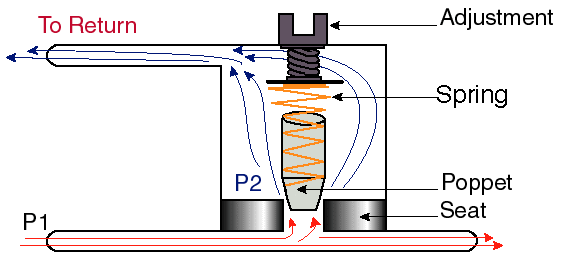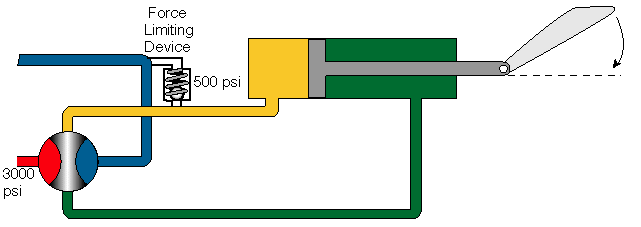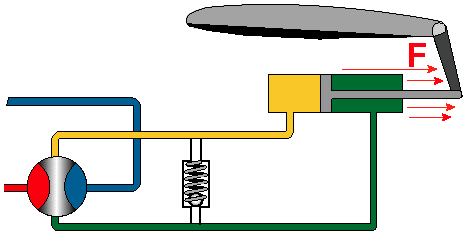 |
|||||
| Home | Research | For Teachers | HISTORY Level 1 Level 2 Level 3 |
PRINCIPLES Level 1 Level 2 Level 3 |
CAREER Level 1 Level 2 Level 3 |
| Gallery | Hot Links | What's New! | |||
| Web Administration and Tools | |||||
 |
|||||
| Home | Research | For Teachers | HISTORY Level 1 Level 2 Level 3 |
PRINCIPLES Level 1 Level 2 Level 3 |
CAREER Level 1 Level 2 Level 3 |
| Gallery | Hot Links | What's New! | |||
| Web Administration and Tools | |||||
![]()
To limit the pressure of some section of the hydraulic system when the pressure has reached a predetermined level. That pressure level may be considered dangerous and, therefore, must be limited.

The adjustment screw at the top of the pressure relief valve is set for a certain pressure value, let us call it P2. In general, even with a pressure of P1, the poppet would lift up, except that the spring is strong and has downward force forcing the poppet closed. Poppet will not move until a pressure greater than that required is felt by the system (i.e., P1>P2). When the pressure increases, the poppet will move up, forcing the excess liquid to move through opening at high velocity. On other side of seat, pressure is zero because the back side of the relief valve is connected to the return line. When the pressure in the system decreases below maximum, poppet will return to its seated position, sealing the orifice and allowing the fluid to follow its normal path. These type of pressure relief valves are only made to be used intermittently.
An example of designing the spring required for a poppet valve--
If the frontal area of the poppet is 1/3 square inches and the liquid pressure is at 6000 psi, find the spring force required to keep the poppet shut.
The frontal area is the effective area on which the fluid pressure acts. Even if the poppet sides are slanted, the pressure acts normal to that surface area, producing forces normal to that surface area. These forces can be resolved into force components perpendicular to the flow direction and force components parallel to the flow direction. The force components that are perpendicular to the flow direction for both the top slant face and bottom slant face cancel. The force components that are parallel to the flow direction for the top slant face and bottom slant face add.
This is equivalent to finding the area that the poppet seats and multiplying it by the
pressure of the fluid, namely, ![]()


Send all comments to ![]() aeromaster@eng.fiu.edu
aeromaster@eng.fiu.edu
© 1995-98 ALLSTAR Network. All rights reserved worldwide.
Updated: February 23, 1999